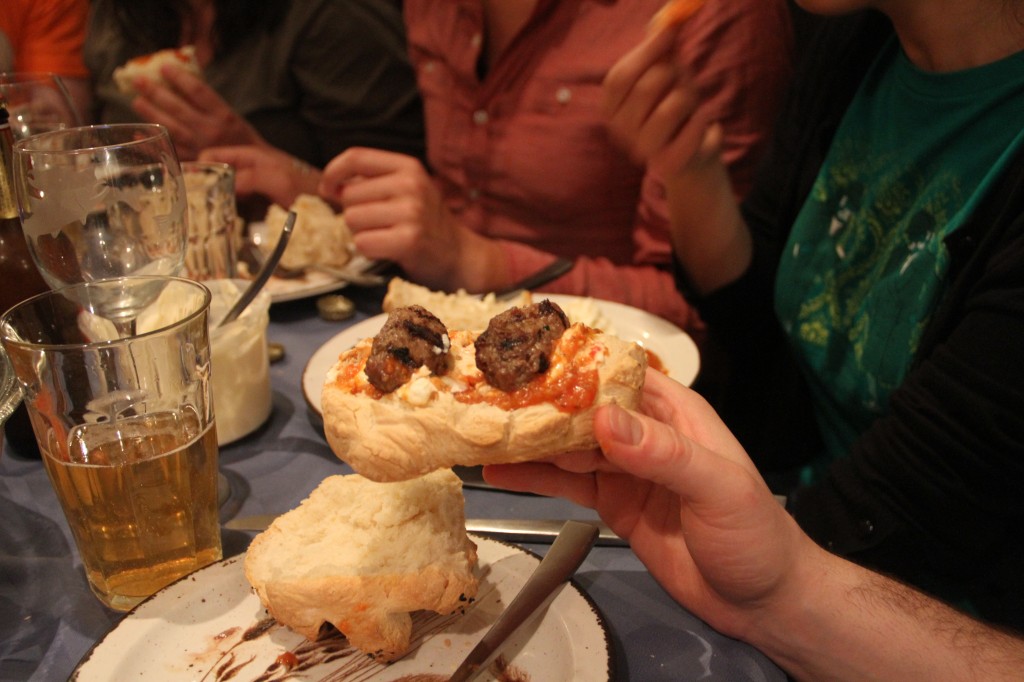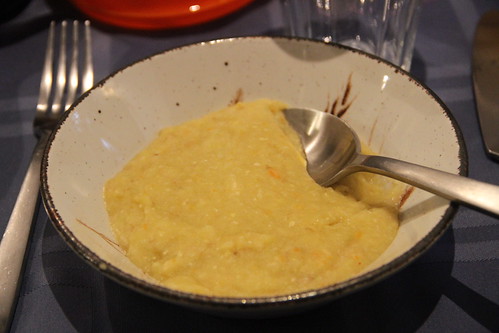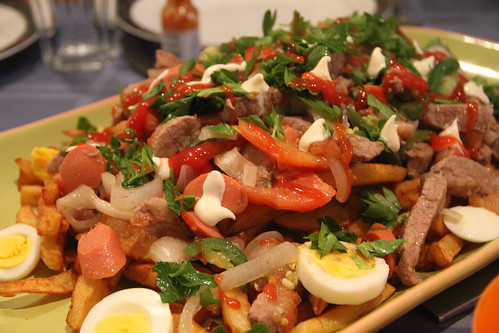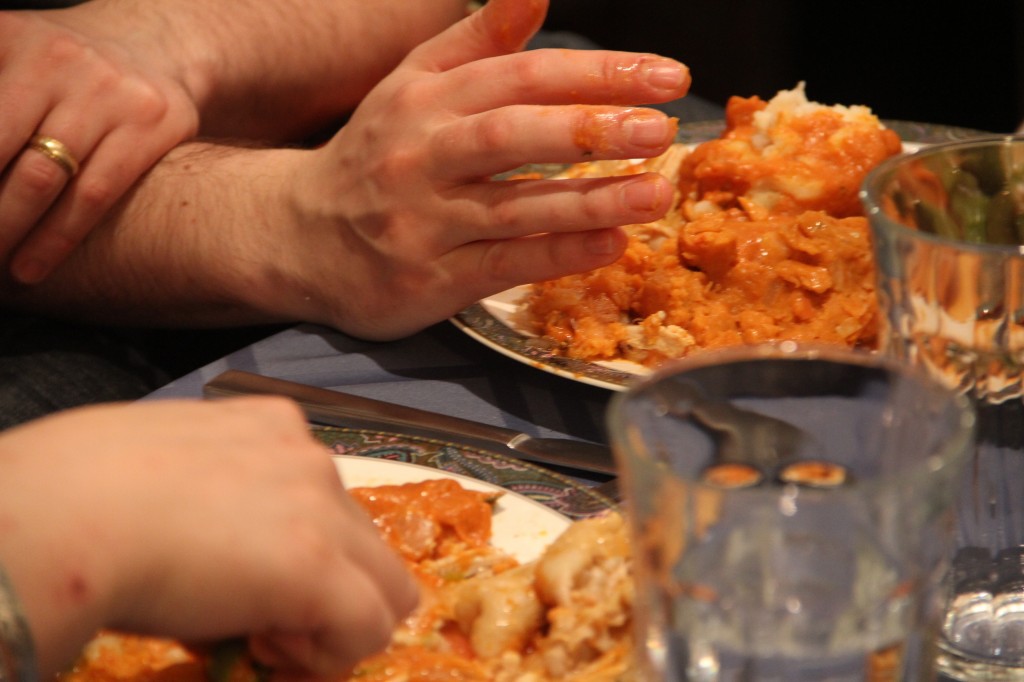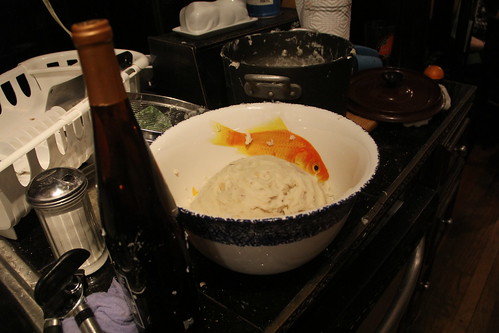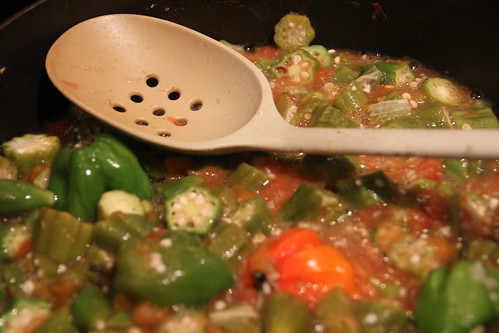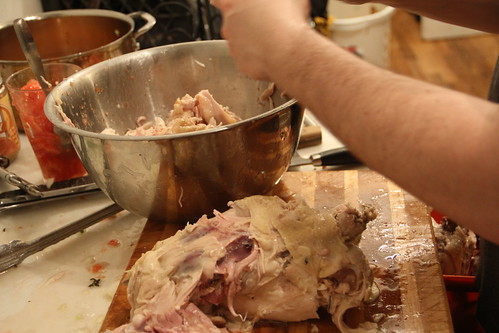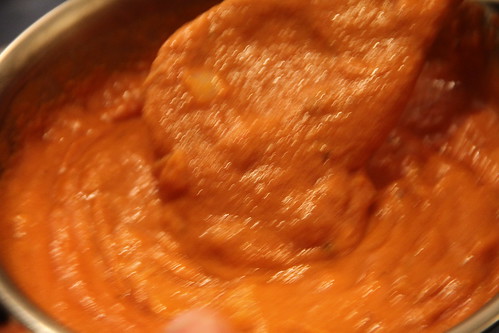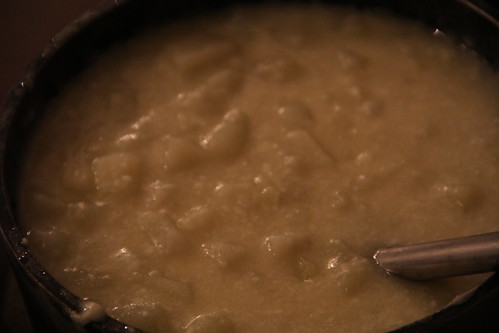Upon stepping into the EuroMarket at 31st Street and 30th Road in Astoria — and residents of Queens wonder why we make fun of their street naming! — I was assaulted by the smell of smoke and meat, from bins labeled suho meso, which a quick search on my phone confirmed is Bosnian smoked, dried beef. I agonized for several minutes over whether to cram a kilo sack of Bosnian flour into my bag, and decided to go for it, since it was labeled at Type 400, which another search revealed is a soft pastry flour that would make for a better burek. A six-pack of Bosnian beer here, two bottles of Herzegovinan wine and some Croatian plum brandy there, ground meat, homemade clotted cream and sundry other ingredients later, I was laden like a pack mule for my three-train ride home.
We had quite a full table tonight. Many of our guests came from The Moth, Laura's workplace: Brandon brought his roommates Eric and Nicole, David brought his wife Anna (to whom he proposed in Bosnia!), and Aditi put in an appearance before finishing her internship. We also enjoyed the company of Jeff and Elly, as well as Mark who'd recently been to Bosnia's neighbor Macedonia and brought some potent liquor. Very present in absentia were Snezan and Neely, who helped a ton with the menu and shopping suggestions, but couldn't make it tonight.
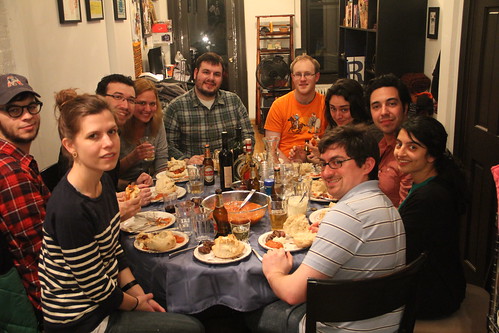
Big thanks to everyone for schlepping over from Jersey, the Bronx, and Prospect Heights!
Ćevapi | Beef and lamb kabobs | Recipe
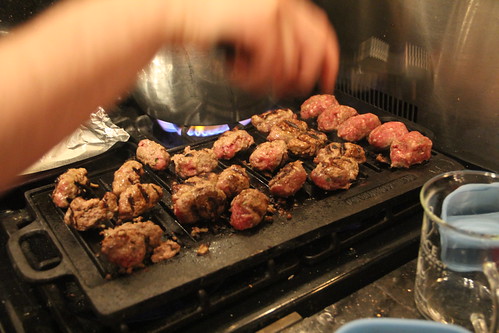
As far as I'm concerned, if you want to make a ground meat kebab (aka kefta), look no further than this recipe. The blend of two meats makes for rich flavor and lovely texture, the overnight wait lets the flavors permeate, and the soda water makes it fluffier or something. One modification I made, based on several sources I read, was to replace the salt and pepper with Vegeta, which seems to be the ubiquitous Balkan equivalent of Mrs. Dash.
Ajvar | Red pepper and eggplant sauce | Recipe

A delicious sauce/dip/spread of roasted pepper, eggplant, onion, and garlic, whose sweet and tang makes for a classic contrast with the meat. If you make this recipe, and I hope you do, two notes: it yields more than a half gallon so don't hesitate to shrink it if you don't need that much ajvar, and be generous with the roasting time since the extra time in the oven to get the veggies good and blistered will spare you at least that much when it comes to peeling the skins.
Kajmak | Clotted cream

This is apparently the result of slowly boiling unpasteurized milk, carefully collecting the cream that gently cooks and collects on the top, and then aging it. Several pages mentioned that homemade was far superior to storebought, so I was delighted to see a so-called homemade version at the store. (It was also double the price of the more commercial looking version so I'll believe them!) I'm not sure how close to authentic it was, but it was sure yummy, slightly tangy with a beautiful thickness.
Somun | Flatbread | Recipe
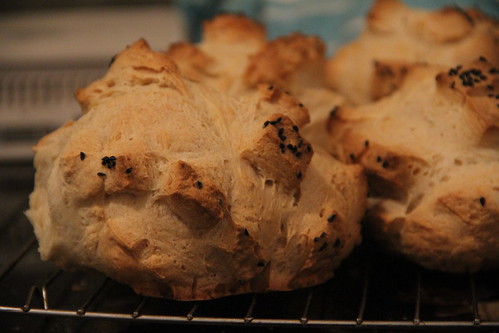
As you can see from the photo, this bread was not flat. I think I let it rise too long, and didn't start it on high enough heat. But whatever! It looks like an explosion from a manga in glutinous form, and it also tasted really good with the meat and spreads. Next time, if I'm starting the bread on the early side I'll try to remember to use a little less yeast.
Rakija and šljivovica | Brandies
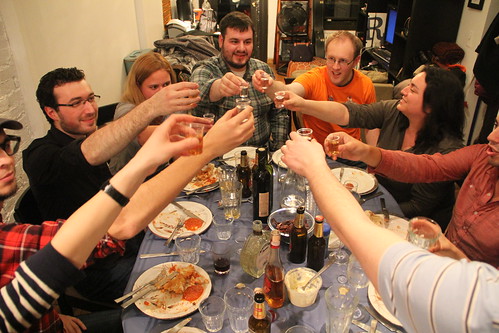
Mark's rakija (grape brandy) and my slivovitz (plum brandy) made for several delicious rounds of shots. Živjeli!
Pita zeljanica | Spinach and feta pie | Recipe
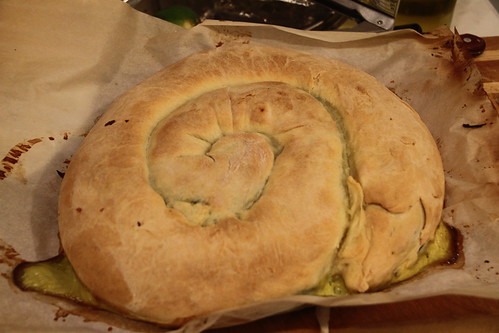
One of the Ottoman Empire's enduring gifts to humanity is the borek, the great empanada of the sultans. A fun Balkan twist on this stuffed-dough genre is to spiral it up like a snail. In Bosnia, the term borek generally applies only to the meat-filled version, whereas the broader name is pita. I chose this version to add some greenery to the meal. I also made the dough from scratch, with that soft Bosnian flour, which was really smooth and rolled out super big. I thought it turned out really nicely: a crust with just enough flavor but neither too crispy or too chewy, and a filling that was fully cooked and tasty. Paired nicely with a big scoop of yogurt.

Tufahije | Stuffed baked apples | Recipe (in translation from Croatian)
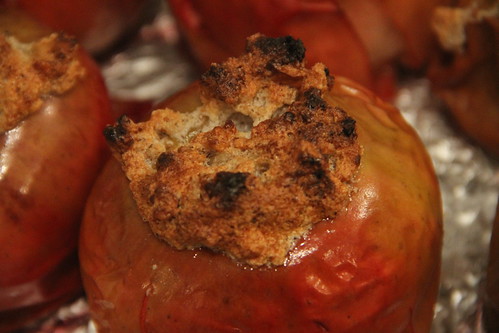
Blessedly, the most distinctive Bosnian dessert doesn't involve pastry or bread. It's baked apples, but the technique is a bit of a twist: you boil the apples first in a light syrup, stuff the apples with egg whites and walnuts, bake them off, and simmer down and sweeten the syrup. Add a dollop of whipped cream, and you've got yourself a treat.
Thanks to our guests for their generous contributions to the World Food Program, which will make for a $220 donation, our biggest yet for a single meal. Next week we're heading 4,800 miles due south to Botswana, whose cuisine has at least one point in common: dry-preserved meat. More on that soon!
